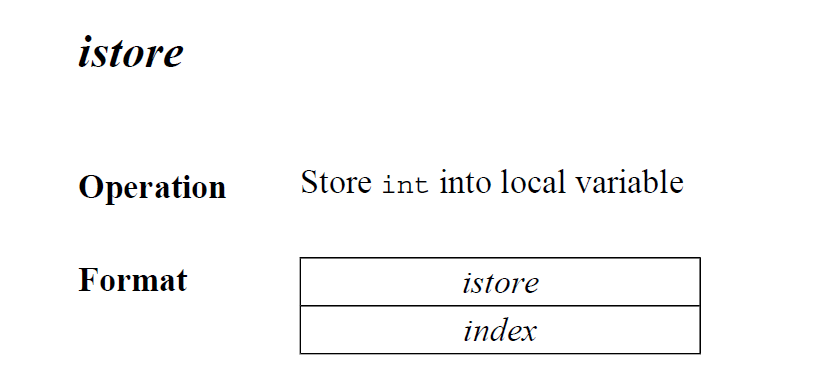[inside hotspot] 汇编模板解释器(Template Interpreter)和字节码执行
1.模板解释器
hotspot解释器模块(hotspot\src\share\vm\interpreter)有两个实现:基于C++的解释器和基于汇编的模板解释器。hotspot默认使用比较快的模板解释器。
其中
C++解释器 =
bytecodeInterpreter*+cppInterpreter*模板解释器 =
templateTable*+templateInterpreter*
它们前者负责字节码的解释,后者负责解释器的运行时,共同完成解释功能。这里我们只关注模板解释器。
模板解释器又分为三个组成部分:
templateInterpreterGenerator解释器生成器templateTable字节码实现templateInterpreter解释器
可能看起来很奇怪,为什么有一个解释器生成器和字节码实现。进入解释器实现:
class TemplateInterpreter: public AbstractInterpreter { friend class VMStructs;
friend class InterpreterMacroAssembler;
friend class TemplateInterpreterGenerator;
friend class TemplateTable;
friend class CodeCacheExtensions;
// friend class Interpreter;
public: enum MoreConstants {
number_of_return_entries = number_of_states, // number of return entry points
number_of_deopt_entries = number_of_states, // number of deoptimization entry points
number_of_return_addrs = number_of_states // number of return addresses
}; protected: static address _throw_ArrayIndexOutOfBoundsException_entry; static address _throw_ArrayStoreException_entry; static address _throw_ArithmeticException_entry; static address _throw_ClassCastException_entry; static address _throw_NullPointerException_entry; static address _throw_exception_entry; static address _throw_StackOverflowError_entry; static address _remove_activation_entry; // continuation address if an exception is not handled by current frame#ifdef HOTSWAP
static address _remove_activation_preserving_args_entry; // continuation address when current frame is being popped#endif // HOTSWAP#ifndef PRODUCT
static EntryPoint _trace_code;#endif // !PRODUCT
static EntryPoint _return_entry[number_of_return_entries]; // entry points to return to from a call
static EntryPoint _earlyret_entry; // entry point to return early from a call
static EntryPoint _deopt_entry[number_of_deopt_entries]; // entry points to return to from a deoptimization
static EntryPoint _continuation_entry; static EntryPoint _safept_entry; static address _invoke_return_entry[number_of_return_addrs]; // for invokestatic, invokespecial, invokevirtual return entries
static address _invokeinterface_return_entry[number_of_return_addrs]; // for invokeinterface return entries
static address _invokedynamic_return_entry[number_of_return_addrs]; // for invokedynamic return entries
static DispatchTable _active_table; // the active dispatch table (used by the interpreter for dispatch)
static DispatchTable _normal_table; // the normal dispatch table (used to set the active table in normal mode)
static DispatchTable _safept_table; // the safepoint dispatch table (used to set the active table for safepoints)
static address _wentry_point[DispatchTable::length]; // wide instructions only (vtos tosca always)
public:
... static int InterpreterCodeSize;
};里面很多address变量,EntryPoint是一个address数组,DispatchTable也是。
模板解释器就是由一系列例程(routine)组成的,即address变量,它们每个都表示一个例程的入口地址,比如异常处理例程,invoke指令例程,用于gc的safepoint例程...
举个形象的例子,我们都知道字节码文件长这样:
public void f(); 0: aload_0 1: invokespecial #5 // Method A.f:()V 4: getstatic #2 // Field java/lang/System.out:Ljava/io/PrintStream; 7: ldc #6 // String ff 9: invokevirtual #4 // Method java/io/PrintStream.println:(Ljava/lang/String;)V 12: return
如果要让我们写解释器,可能基本上就是一个循环里面switch,根据不同opcode派发到不同例程,例程的代码都是一样的模板代码,对aload_0的处理永远是取局部变量槽0的数据放到栈顶,那么完全可以在switch派发字节码前准备好这些模板代码,templateInterpreterGenerator就是做的这件事,它的generate_all()函数初始化了所有的例程:
void TemplateInterpreterGenerator::generate_all() { // 设置slow_signature_handler例程
{ CodeletMark cm(_masm, "slow signature handler");
AbstractInterpreter::_slow_signature_handler = generate_slow_signature_handler();
} // 设置error_exit例程
{ CodeletMark cm(_masm, "error exits");
_unimplemented_bytecode = generate_error_exit("unimplemented bytecode");
_illegal_bytecode_sequence = generate_error_exit("illegal bytecode sequence - method not verified");
}
......
}另外,既然已经涉及到机器码了,单独的templateInterpreterGenerator显然是不能完成这件事的,它还需要配合hotspot\src\cpu\x86\vm\templateInterpreterGenerator_x86.cpp&&hotspot\src\cpu\x86\vm\templateInterpreterGenerator_x86_64.cpp一起做事(我的机器是x86+windows)。
使用-XX:+UnlockDiagnosticVMOptions -XX:+PrintInterpreter -XX:+LogCompilation -XX:LogFile=file.log保存结果到文件,可以查看生成的这些例程。
随便举个例子,模板解释器特殊处理java.lang.Math里的很多数学函数,使用它们不需要建立通常意义的java栈帧,且使用sse指令可以得到极大的性能提升:
// hotspot\src\cpu\x86\vm\templateInterpreterGenerator_x86_64.cppaddress TemplateInterpreterGenerator::generate_math_entry(AbstractInterpreter::MethodKind kind) { // rbx,: Method*
// rcx: scratrch
// r13: sender sp
if (!InlineIntrinsics) return NULL; // Generate a vanilla entry
address entry_point = __ pc(); if (kind == Interpreter::java_lang_math_fmaD) { if (!UseFMA) { return NULL; // Generate a vanilla entry
}
__ movdbl(xmm0, Address(rsp, wordSize));
__ movdbl(xmm1, Address(rsp, 3 * wordSize));
__ movdbl(xmm2, Address(rsp, 5 * wordSize));
__ fmad(xmm0, xmm1, xmm2, xmm0);
} else if (kind == Interpreter::java_lang_math_fmaF) { if (!UseFMA) { return NULL; // Generate a vanilla entry
}
__ movflt(xmm0, Address(rsp, wordSize));
__ movflt(xmm1, Address(rsp, 2 * wordSize));
__ movflt(xmm2, Address(rsp, 3 * wordSize));
__ fmaf(xmm0, xmm1, xmm2, xmm0);
} else if (kind == Interpreter::java_lang_math_sqrt) {
__ sqrtsd(xmm0, Address(rsp, wordSize));
} else if (kind == Interpreter::java_lang_math_exp) {
__ movdbl(xmm0, Address(rsp, wordSize)); if (StubRoutines::dexp() != NULL) {
__ call(RuntimeAddress(CAST_FROM_FN_PTR(address, StubRoutines::dexp())));
} else {
__ call_VM_leaf0(CAST_FROM_FN_PTR(address, SharedRuntime::dexp));
}
} else if (kind == Interpreter::java_lang_math_log) {
__ movdbl(xmm0, Address(rsp, wordSize)); if (StubRoutines::dlog() != NULL) {
__ call(RuntimeAddress(CAST_FROM_FN_PTR(address, StubRoutines::dlog())));
} else {
__ call_VM_leaf0(CAST_FROM_FN_PTR(address, SharedRuntime::dlog));
}
} else if (kind == Interpreter::java_lang_math_log10) {
__ movdbl(xmm0, Address(rsp, wordSize)); if (StubRoutines::dlog10() != NULL) {
__ call(RuntimeAddress(CAST_FROM_FN_PTR(address, StubRoutines::dlog10())));
} else {
__ call_VM_leaf0(CAST_FROM_FN_PTR(address, SharedRuntime::dlog10));
}
} else if (kind == Interpreter::java_lang_math_sin) {
__ movdbl(xmm0, Address(rsp, wordSize)); if (StubRoutines::dsin() != NULL) {
__ call(RuntimeAddress(CAST_FROM_FN_PTR(address, StubRoutines::dsin())));
} else {
__ call_VM_leaf0(CAST_FROM_FN_PTR(address, SharedRuntime::dsin));
}
} else if (kind == Interpreter::java_lang_math_cos) {
__ movdbl(xmm0, Address(rsp, wordSize)); if (StubRoutines::dcos() != NULL) {
__ call(RuntimeAddress(CAST_FROM_FN_PTR(address, StubRoutines::dcos())));
} else {
__ call_VM_leaf0(CAST_FROM_FN_PTR(address, SharedRuntime::dcos));
}
} else if (kind == Interpreter::java_lang_math_pow) {
__ movdbl(xmm1, Address(rsp, wordSize));
__ movdbl(xmm0, Address(rsp, 3 * wordSize)); if (StubRoutines::dpow() != NULL) {
__ call(RuntimeAddress(CAST_FROM_FN_PTR(address, StubRoutines::dpow())));
} else {
__ call_VM_leaf0(CAST_FROM_FN_PTR(address, SharedRuntime::dpow));
}
} else if (kind == Interpreter::java_lang_math_tan) {
__ movdbl(xmm0, Address(rsp, wordSize)); if (StubRoutines::dtan() != NULL) {
__ call(RuntimeAddress(CAST_FROM_FN_PTR(address, StubRoutines::dtan())));
} else {
__ call_VM_leaf0(CAST_FROM_FN_PTR(address, SharedRuntime::dtan));
}
} else {
__ fld_d(Address(rsp, wordSize)); switch (kind) { case Interpreter::java_lang_math_abs:
__ fabs(); break; default:
ShouldNotReachHere();
}
__ subptr(rsp, 2*wordSize); // Round to 64bit precision
__ fstp_d(Address(rsp, 0));
__ movdbl(xmm0, Address(rsp, 0));
__ addptr(rsp, 2*wordSize);
}
__ pop(rax);
__ mov(rsp, r13);
__ jmp(rax); return entry_point;
}我们关注java.lang.math.Pow()方法,加上-XX:+PrintInterpreter查看生成的例程:
else if (kind == Interpreter::java_lang_math_pow) {
__ movdbl(xmm1, Address(rsp, wordSize));
__ movdbl(xmm0, Address(rsp, 3 * wordSize)); if (StubRoutines::dpow() != NULL) {
__ call(RuntimeAddress(CAST_FROM_FN_PTR(address, StubRoutines::dpow())));
} else {
__ call_VM_leaf0(CAST_FROM_FN_PTR(address, SharedRuntime::dpow));
}
}---------------------------------------------------------------------- method entry point (kind = java_lang_math_pow) [0x000001bcb62feaa0, 0x000001bcb62feac0] 32 bytes 0x000001bcb62feaa0: vmovsd 0x8(%rsp),%xmm1 0x000001bcb62feaa6: vmovsd 0x18(%rsp),%xmm0 0x000001bcb62feaac: callq 0x000001bcb62f19d0 0x000001bcb62feab1: pop %rax 0x000001bcb62feab2: mov %r13,%rsp 0x000001bcb62feab5: jmpq *%rax 0x000001bcb62feab7: nop 0x000001bcb62feab8: add %al,(%rax) 0x000001bcb62feaba: add %al,(%rax) 0x000001bcb62feabc: add %al,(%rax) 0x000001bcb62feabe: add %al,(%rax)
callq会调用hotspot\src\cpu\x86\vm\stubGenerator_x86_64.cpp的address generate_libmPow(),感兴趣的可以去看一下,这里就不展开了。
2.字节码的解释执行
现在我们知道了模板解释器其实是由一堆例程构成的,但是,字节码的例程的呢?看看上面TemplateInterpreter的类定义,有个static DispatchTable _active_table;,它就是我们要找的东西了。具体来说templateInterpreterGenerator会调用TemplateInterpreterGenerator::set_entry_points()为每个字节码设置例程,该例程通过templateTable::template_for()获得。同样,这些代码需要关心cpu架构,所以自己每个字节码的例程也是由hotspot\src\cpu\x86\vm\templateTable_x86.cpp+templateTable共同完成的。
字节码太多了,这里也随便举个例子,考虑istore,它负责将栈顶数据出栈并存放到当前方法的局部变量表,实现如下:
void TemplateTable::istore() {
transition(itos, vtos);
locals_index(rbx);
__ movl(iaddress(rbx), rax);
}合情合理的实现
等等,当使用-XX:+PrintInterpreter查看istore的合情合理的例程时却得到了一大堆汇编:
---------------------------------------------------------------------- istore 54 istore [0x00000192d1972ba0, 0x00000192d1972c00] 96 bytes 0x00000192d1972ba0: mov (%rsp),%eax 0x00000192d1972ba3: add $0x8,%rsp 0x00000192d1972ba7: movzbl 0x1(%r13),%ebx 0x00000192d1972bac: neg %rbx 0x00000192d1972baf: mov %eax,(%r14,%rbx,8) 0x00000192d1972bb3: movzbl 0x2(%r13),%ebx 0x00000192d1972bb8: add $0x2,%r13 0x00000192d1972bbc: movabs $0x7fffd56e0fa0,%r10 0x00000192d1972bc6: jmpq *(%r10,%rbx,8) 0x00000192d1972bca: mov (%rsp),%eax 0x00000192d1972bcd: add $0x8,%rsp 0x00000192d1972bd1: movzwl 0x2(%r13),%ebx 0x00000192d1972bd6: bswap %ebx 0x00000192d1972bd8: shr $0x10,%ebx 0x00000192d1972bdb: neg %rbx 0x00000192d1972bde: mov %eax,(%r14,%rbx,8) 0x00000192d1972be2: movzbl 0x4(%r13),%ebx 0x00000192d1972be7: add $0x4,%r13 0x00000192d1972beb: movabs $0x7fffd56e0fa0,%r10 0x00000192d1972bf5: jmpq *(%r10,%rbx,8) 0x00000192d1972bf9: nopl 0x0(%rax)
虽然勉强能看出mov %eax,(%r14,%rbx,8)对应__ movl(iaddress(n), rax);,但是多出来的代码怎么回事。
要回答这个问题,需要点其他知识。
之前提到
templateInterpreterGenerator会调用TemplateInterpreterGenerator::set_entry_points()为每个字节码设置例程
可以从set_entry_points出发看看它为istore做了什么特殊的事情:
... // 指令是否存在
if (Bytecodes::is_defined(code)) {
Template* t = TemplateTable::template_for(code);
assert(t->is_valid(), "just checking");
set_short_entry_points(t, bep, cep, sep, aep, iep, lep, fep, dep, vep);
} // 指令是否可以扩宽,即wide
if (Bytecodes::wide_is_defined(code)) {
Template* t = TemplateTable::template_for_wide(code);
assert(t->is_valid(), "just checking");
set_wide_entry_point(t, wep);
}
...
}中间有一句话:
Template* t = TemplateTable::template_for(code);
从模板表中的查找Bytecodes::Code常量得到的是一个Template,Template描述了一个指定的字节码对应的代码的一些属性
// A Template describes the properties of a code template for a given bytecode
// and provides a generator to generate the code template.
// hotspot\src\share\vm\utilities\globalDefinitions.hpp// TosState用来描述一个字节码或者方法执行前后的状态。enum TosState { // describes the tos cache contents
btos = 0, // byte, bool tos cached
ztos = 1, // byte, bool tos cached
ctos = 2, // char tos cached
stos = 3, // short tos cached
itos = 4, // int tos cached
ltos = 5, // long tos cached
ftos = 6, // float tos cached
dtos = 7, // double tos cached
atos = 8, // object cached
vtos = 9, // tos not cached
number_of_states,
ilgl // illegal state: should not occur};// hotspot\src\share\vm\interpreter\templateTable.hppclass Template VALUE_OBJ_CLASS_SPEC {
private: enum Flags {
uses_bcp_bit, // 是否需要字节码指针(bcp)?
does_dispatch_bit, // 是否需要dispatch?
calls_vm_bit, // 是否调用了虚拟机方法?
wide_bit // 能否扩宽,即加wide
}; typedef void (*generator)(int arg); // 字节码代码生成器,其实是一个函数指针
int _flags; // 就是描述的flag
TosState _tos_in; // 执行字节码前的栈顶缓存状态
TosState _tos_out; // 执行字节码的栈顶缓存状态
generator _gen; // 字节码代码生成器
int _arg; // 字节码代码生成器参数然后找到istore对应的模板定义:
//hotspot\src\share\vm\interpreter\templateTable.cppvoid TemplateTable::initialize() {
... // interpr. templates
// Java spec bytecodes ubcp|disp|clvm|iswd in out generator argument
def(Bytecodes::_istore , ubcp|____|clvm|____, itos, vtos, istore , _ );
def(Bytecodes::_lstore , ubcp|____|____|____, ltos, vtos, lstore , _ );
def(Bytecodes::_fstore , ubcp|____|____|____, ftos, vtos, fstore , _ );
def(Bytecodes::_dstore , ubcp|____|____|____, dtos, vtos, dstore , _ );
def(Bytecodes::_astore , ubcp|____|clvm|____, vtos, vtos, astore , _ );
... // wide Java spec bytecodes
def(Bytecodes::_istore , ubcp|____|____|iswd, vtos, vtos, wide_istore , _ );
def(Bytecodes::_lstore , ubcp|____|____|iswd, vtos, vtos, wide_lstore , _ );
def(Bytecodes::_fstore , ubcp|____|____|iswd, vtos, vtos, wide_fstore , _ );
def(Bytecodes::_dstore , ubcp|____|____|iswd, vtos, vtos, wide_dstore , _ );
def(Bytecodes::_astore , ubcp|____|____|iswd, vtos, vtos, wide_astore , _ );
def(Bytecodes::_iinc , ubcp|____|____|iswd, vtos, vtos, wide_iinc , _ );
def(Bytecodes::_ret , ubcp|disp|____|iswd, vtos, vtos, wide_ret , _ );
def(Bytecodes::_breakpoint , ubcp|disp|clvm|____, vtos, vtos, _breakpoint , _ );
...
}这里定义的意思就是,istore使用无参数的生成器istore函数生成例程,这个生成器正是之前提到的那个很短的汇编代码:
void TemplateTable::istore() {
transition(itos, vtos);
locals_index(rbx);
__ movl(iaddress(rbx), rax);
}ubcp表示使用字节码指针,所谓字节码指针指的是该字节码的操作数是否存在于字节码里面,一图胜千言:
istore的index紧跟在istore(0x36)后面,所以istore需要移动字节码指针以获取index。
istore还规定执行前栈顶缓存int值(itos),执行后不缓存(vtos),且istore还有一个wide版本,这个版本使用两个字节的index。
有了这些信息,可以试着解释多出的汇编是怎么回事了。set_entry_points()为istore和wide版本的istore生成代码,
我们选择普通版本的istore解释,wide版本的依样画葫芦即可。它又进一步调用了set_short_entry_points():
void TemplateInterpreterGenerator::set_entry_points(Bytecodes::Code code) {
... if (Bytecodes::is_defined(code)) {
Template* t = TemplateTable::template_for(code);
assert(t->is_valid(), "just checking");
set_short_entry_points(t, bep, cep, sep, aep, iep, lep, fep, dep, vep);
} if (Bytecodes::wide_is_defined(code)) {
Template* t = TemplateTable::template_for_wide(code);
assert(t->is_valid(), "just checking");
set_wide_entry_point(t, wep);
}
...
}void TemplateInterpreterGenerator::set_short_entry_points(Template* t, address& bep, address& cep, address& sep, address& aep, address& iep, address& lep, address& fep, address& dep, address& vep) {
assert(t->is_valid(), "template must exist"); switch (t->tos_in()) { case btos: case ztos: case ctos: case stos:
ShouldNotReachHere(); // btos/ctos/stos should use itos.
break; case atos: vep = __ pc(); __ pop(atos); aep = __ pc(); generate_and_dispatch(t); break; case itos: vep = __ pc(); __ pop(itos); iep = __ pc(); generate_and_dispatch(t); break; case ltos: vep = __ pc(); __ pop(ltos); lep = __ pc(); generate_and_dispatch(t); break; case ftos: vep = __ pc(); __ pop(ftos); fep = __ pc(); generate_and_dispatch(t); break; case dtos: vep = __ pc(); __ pop(dtos); dep = __ pc(); generate_and_dispatch(t); break; case vtos: set_vtos_entry_points(t, bep, cep, sep, aep, iep, lep, fep, dep, vep); break; default : ShouldNotReachHere(); break;
}
}set_short_entry_points会根据该指令执行前是否需要栈顶缓存pop数据,istore使用了itos缓存,所以需要pop:
// hotspot\src\cpu\x86\vm\interp_masm_x86.cppsvoid InterpreterMacroAssembler::pop_i(Register r) { // XXX can't use pop currently, upper half non clean
movl(r, Address(rsp, 0));
addptr(rsp, wordSize);
}稍微需要注意的是这里说的pop是一个弹出的概念,实际生成的代码是mov,试着解释那一大堆汇编:
mov指令
---------------------------------------------------------------------- istore 54 istore [0x00000192d1972ba0, 0x00000192d1972c00] 96 bytes ;获取栈顶int缓存 0x00000192d1972ba0: mov (%rsp),%eax 0x00000192d1972ba3: add $0x8,%rsp 0x00000192d1972ba7: movzbl 0x1(%r13),%ebx 0x00000192d1972bac: neg %rbx 0x00000192d1972baf: mov %eax,(%r14,%rbx,8) 0x00000192d1972bb3: movzbl 0x2(%r13),%ebx 0x00000192d1972bb8: add $0x2,%r13 0x00000192d1972bbc: movabs $0x7fffd56e0fa0,%r10 0x00000192d1972bc6: jmpq *(%r10,%rbx,8) 0x00000192d1972bca: mov (%rsp),%eax 0x00000192d1972bcd: add $0x8,%rsp 0x00000192d1972bd1: movzwl 0x2(%r13),%ebx 0x00000192d1972bd6: bswap %ebx 0x00000192d1972bd8: shr $0x10,%ebx 0x00000192d1972bdb: neg %rbx 0x00000192d1972bde: mov %eax,(%r14,%rbx,8) 0x00000192d1972be2: movzbl 0x4(%r13),%ebx 0x00000192d1972be7: add $0x4,%r13 0x00000192d1972beb: movabs $0x7fffd56e0fa0,%r10 0x00000192d1972bf5: jmpq *(%r10,%rbx,8) 0x00000192d1972bf9: nopl 0x0(%rax)
接着generate_and_dispatch()又分为执行前(dispatch_prolog)+执行字节码(t->generate())+执行后三部分(dispatch_epilog):
void TemplateInterpreterGenerator::generate_and_dispatch(Template* t, TosState tos_out) {
... int step = 0; if (!t->does_dispatch()) {
step = t->is_wide() ? Bytecodes::wide_length_for(t->bytecode()) : Bytecodes::length_for(t->bytecode()); if (tos_out == ilgl) tos_out = t->tos_out(); // compute bytecode size
assert(step > 0, "just checkin'"); // setup stuff for dispatching next bytecode
if (ProfileInterpreter && VerifyDataPointer
&& MethodData::bytecode_has_profile(t->bytecode())) {
__ verify_method_data_pointer();
}
__ dispatch_prolog(tos_out, step);
} // generate template
t->generate(_masm); // advance
if (t->does_dispatch()) {#ifdef ASSERT
// make sure execution doesn't go beyond this point if code is broken
__ should_not_reach_here();#endif // ASSERT
} else { // dispatch to next bytecode
__ dispatch_epilog(tos_out, step);
}
}x86的字节码执行前不会做任何事,所以没有其他代码:
---------------------------------------------------------------------- istore 54 istore [0x00000192d1972ba0, 0x00000192d1972c00] 96 bytes ;获取栈顶int缓存 0x00000192d1972ba0: mov (%rsp),%eax 0x00000192d1972ba3: add $0x8,%rsp ; 执行istore,即移动bcp指针获取index,放入局部变量槽 0x00000192d1972ba7: movzbl 0x1(%r13),%ebx 0x00000192d1972bac: neg %rbx 0x00000192d1972baf: mov %eax,(%r14,%rbx,8) 0x00000192d1972bb3: movzbl 0x2(%r13),%ebx 0x00000192d1972bb8: add $0x2,%r13 0x00000192d1972bbc: movabs $0x7fffd56e0fa0,%r10 0x00000192d1972bc6: jmpq *(%r10,%rbx,8) 0x00000192d1972bca: mov (%rsp),%eax 0x00000192d1972bcd: add $0x8,%rsp 0x00000192d1972bd1: movzwl 0x2(%r13),%ebx 0x00000192d1972bd6: bswap %ebx 0x00000192d1972bd8: shr $0x10,%ebx 0x00000192d1972bdb: neg %rbx 0x00000192d1972bde: mov %eax,(%r14,%rbx,8) 0x00000192d1972be2: movzbl 0x4(%r13),%ebx 0x00000192d1972be7: add $0x4,%r13 0x00000192d1972beb: movabs $0x7fffd56e0fa0,%r10 0x00000192d1972bf5: jmpq *(%r10,%rbx,8) 0x00000192d1972bf9: nopl 0x0(%rax)
执行后调用的是dispatch_prolog:
void InterpreterMacroAssembler::dispatch_epilog(TosState state, int step) {
dispatch_next(state, step);
}void InterpreterMacroAssembler::dispatch_next(TosState state, int step) { // load next bytecode (load before advancing _bcp_register to prevent AGI)
load_unsigned_byte(rbx, Address(_bcp_register, step)); // advance _bcp_register
increment(_bcp_register, step);
dispatch_base(state, Interpreter::dispatch_table(state));
}void InterpreterMacroAssembler::dispatch_base(TosState state,
address* table, bool verifyoop) {
verify_FPU(1, state); if (VerifyActivationFrameSize) {
Label L;
mov(rcx, rbp);
subptr(rcx, rsp); int32_t min_frame_size =
(frame::link_offset - frame::interpreter_frame_initial_sp_offset) *
wordSize;
cmpptr(rcx, (int32_t)min_frame_size);
jcc(Assembler::greaterEqual, L);
stop("broken stack frame");
bind(L);
} if (verifyoop) {
verify_oop(rax, state);
}#ifdef _LP64
// 防止意外执行到死代码
lea(rscratch1, ExternalAddress((address)table));
jmp(Address(rscratch1, rbx, Address::times_8));#else
Address index(noreg, rbx, Address::times_ptr); ExternalAddress tbl((address)table); ArrayAddress dispatch(tbl, index);
jump(dispatch);#endif // _LP64}---------------------------------------------------------------------- istore 54 istore [0x00000192d1972ba0, 0x00000192d1972c00] 96 bytes ; 获取栈顶int缓存 0x00000192d1972ba0: mov (%rsp),%eax 0x00000192d1972ba3: add $0x8,%rsp ; 执行istore,即移动bcp指针获取index,放入局部变量槽 0x00000192d1972ba7: movzbl 0x1(%r13),%ebx 0x00000192d1972bac: neg %rbx 0x00000192d1972baf: mov %eax,(%r14,%rbx,8) ; 加载下一个字节码,istore后面一个字节是index,所以需要r13+2 0x00000192d1972bb3: movzbl 0x2(%r13),%ebx 0x00000192d1972bb8: add $0x2,%r13 ; 防止意外执行到死代码 0x00000192d1972bbc: movabs $0x7fffd56e0fa0,%r10 0x00000192d1972bc6: jmpq *(%r10,%rbx,8) ;;;;;;;;;;;;;;;;;;;;;;;;;;;;;;;;;;;;;;;;;;;;;;;;;;;;;;;;;;;;;;;;;;;;;;;; ; 之前提到istore有一个wide版本的也会一并生成,wide istore格式如下 ; wide istore byte1, byte2 [四个字节] ;;;;;;;;;;;;;;;;;;;;;;;;;;;;;;;;;;;;;;;;;;;;;;;;;;;;;;;;;;;;;;;;;;;;;;;; ; 获取栈顶缓存的int 0x00000192d1972bca: mov (%rsp),%eax 0x00000192d1972bcd: add $0x8,%rsp ; 获取两个字节的index 0x00000192d1972bd1: movzwl 0x2(%r13),%ebx ; 除两个字节的index外0填充,比如当前index分别为2,2,扩展后ebx=0x00000202 0x00000192d1972bd6: bswap %ebx ; 4个字节反序,ebx=0x02020000 0x00000192d1972bd8: shr $0x10,%ebx ; ebx=0x00000202 0x00000192d1972bdb: neg %rbx ; 取负数 0x00000192d1972bde: mov %eax,(%r14,%rbx,8) ; r14-rbx*8, ; 加载下一个字节码,wide istore byte1,byte2 所以r13+4 0x00000192d1972be2: movzbl 0x4(%r13),%ebx 0x00000192d1972be7: add $0x4,%r13 ; 防止意外执行到死代码 0x00000192d1972beb: movabs $0x7fffd56e0fa0,%r10 0x00000192d1972bf5: jmpq *(%r10,%rbx,8) 0x00000192d1972bf9: nopl 0x0(%rax)
作者:racaljk

 随时随地看视频
随时随地看视频




